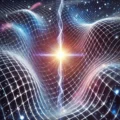Great Equations are Models of Possibilities, not Certainties.
Explanation
Iconic equations in physics—like Einstein’s E=mc2, Maxwell’s equations, and Schrödinger’s wave equation—are triumphs of human ingenuity, encapsulating observed phenomena. However, they are models, not immutable laws. They are dynamic frameworks, subject to refinement or even replacement as our understanding evolves. These equations exist in a symbiotic dance with uncertainty, serving as approximations of a reality that resists absolute definition. They are invitations to explore, not dogmatic doctrines.
Pure mathematics, while powerful in logical deduction, sometimes falls short in capturing the universe’s full complexity. While formulas like Ohm’s Law and calculus provide snapshots and measure change within limits, they struggle with sequential calculations involving multiple inputs and decision points, crucial for intricate phenomena. Examples include solving differential equations (using iterative approximations like Euler’s method) and optimization problems (using algorithms like gradient descent). Machine learning and AI further illustrate this with algorithms that learn iteratively.
“Equations are only abstracts for models, a sequential symbol for an action that occurs, but not a proof of the real mechanism behind the curtain.”
That statement belongs on the wall of every research institute.
It’s not that mathematics is inherently wrong—it’s that it should never be mistaken for explanation. CA offers a mechanistic hypothesis, grounded in field dynamics and feedback structure. These can be mapped to math later. But, clarity precedes codification.
MATH Recap:
Our understanding of the universe relies on mathematics. Iconic equations describe and predict phenomena, but they are evolving models, not absolute truths. They capture the essence of observations but may not reflect ultimate reality. Like maps, they guide exploration, acknowledging the limitations of our knowledge. Furthermore, pure math’s focus on singular calculations can be insufficient for complex scenarios requiring sequential decision-making, where iterative methods are essential. Ultimately, mathematics is a springboard for discovery, a language for exploring the universe and refining our understanding, not a final answer.
